
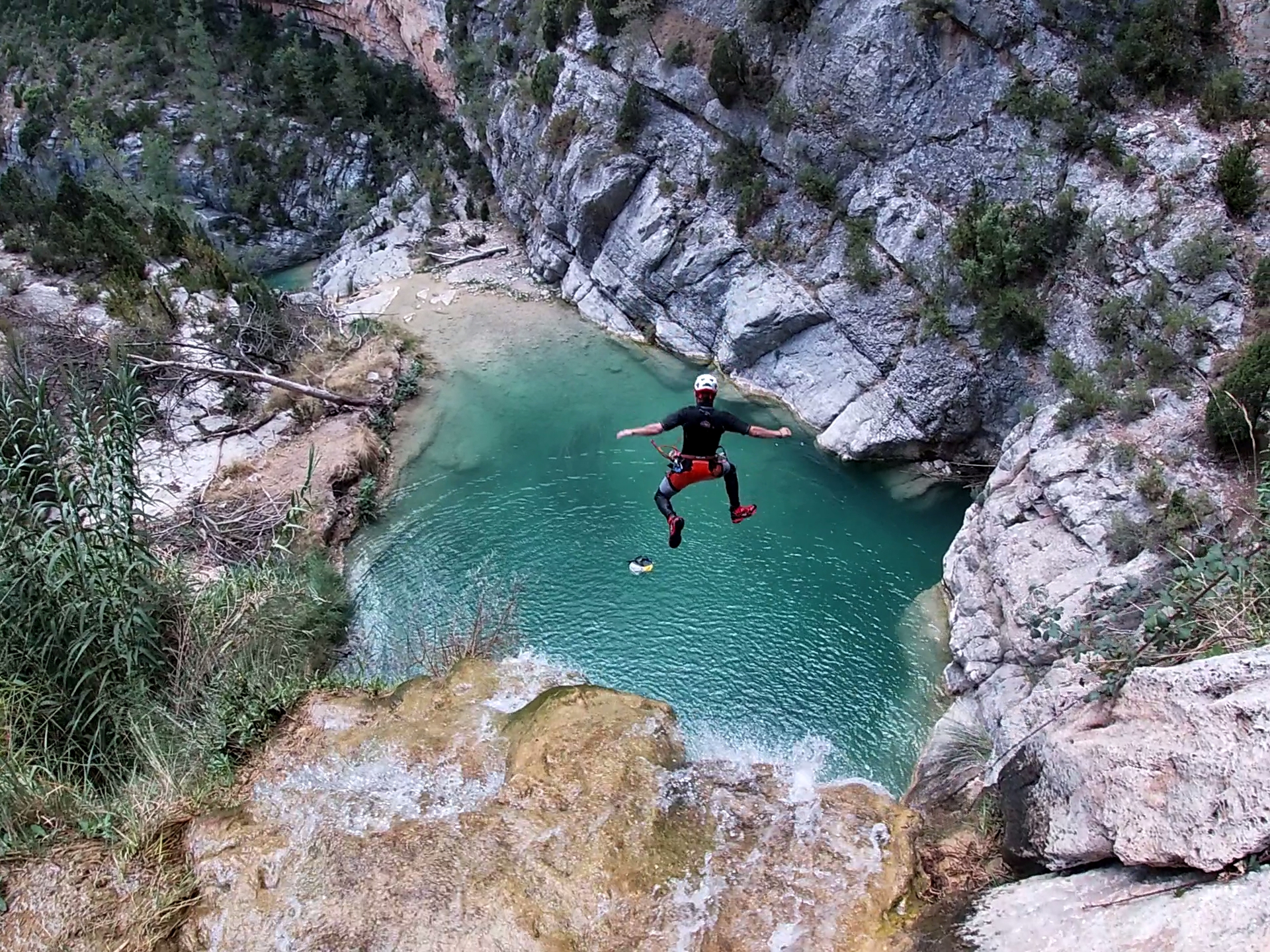
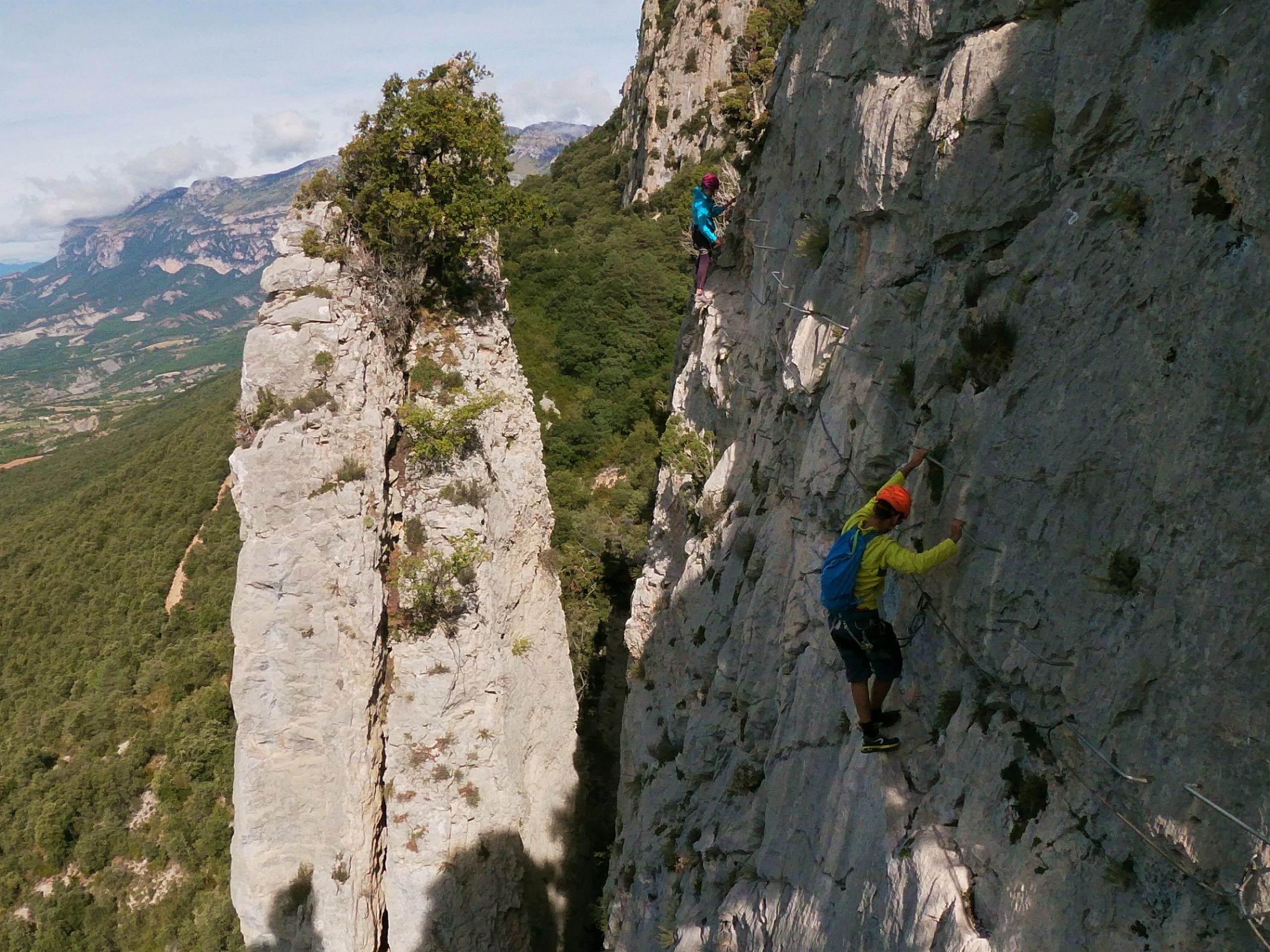
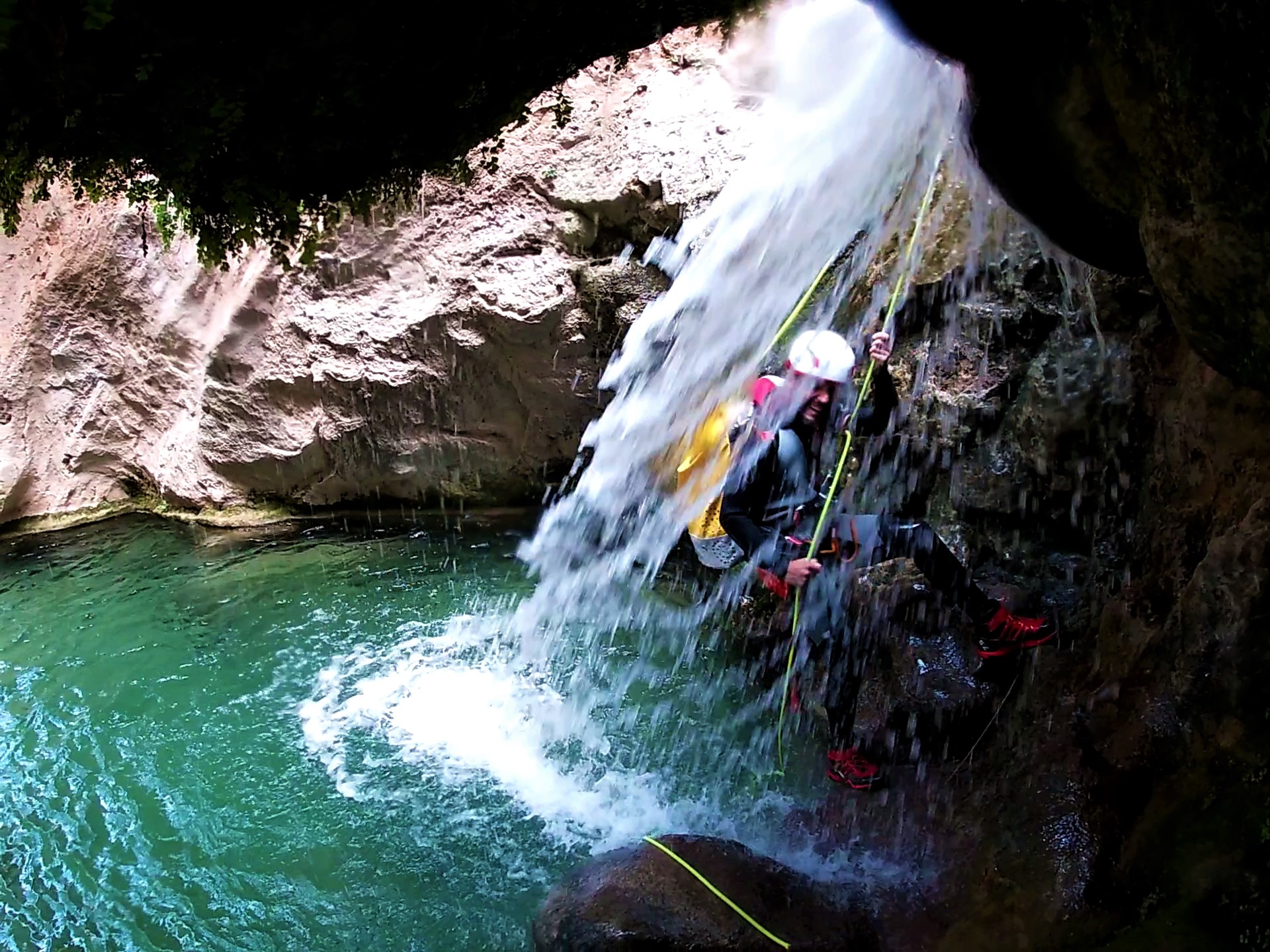
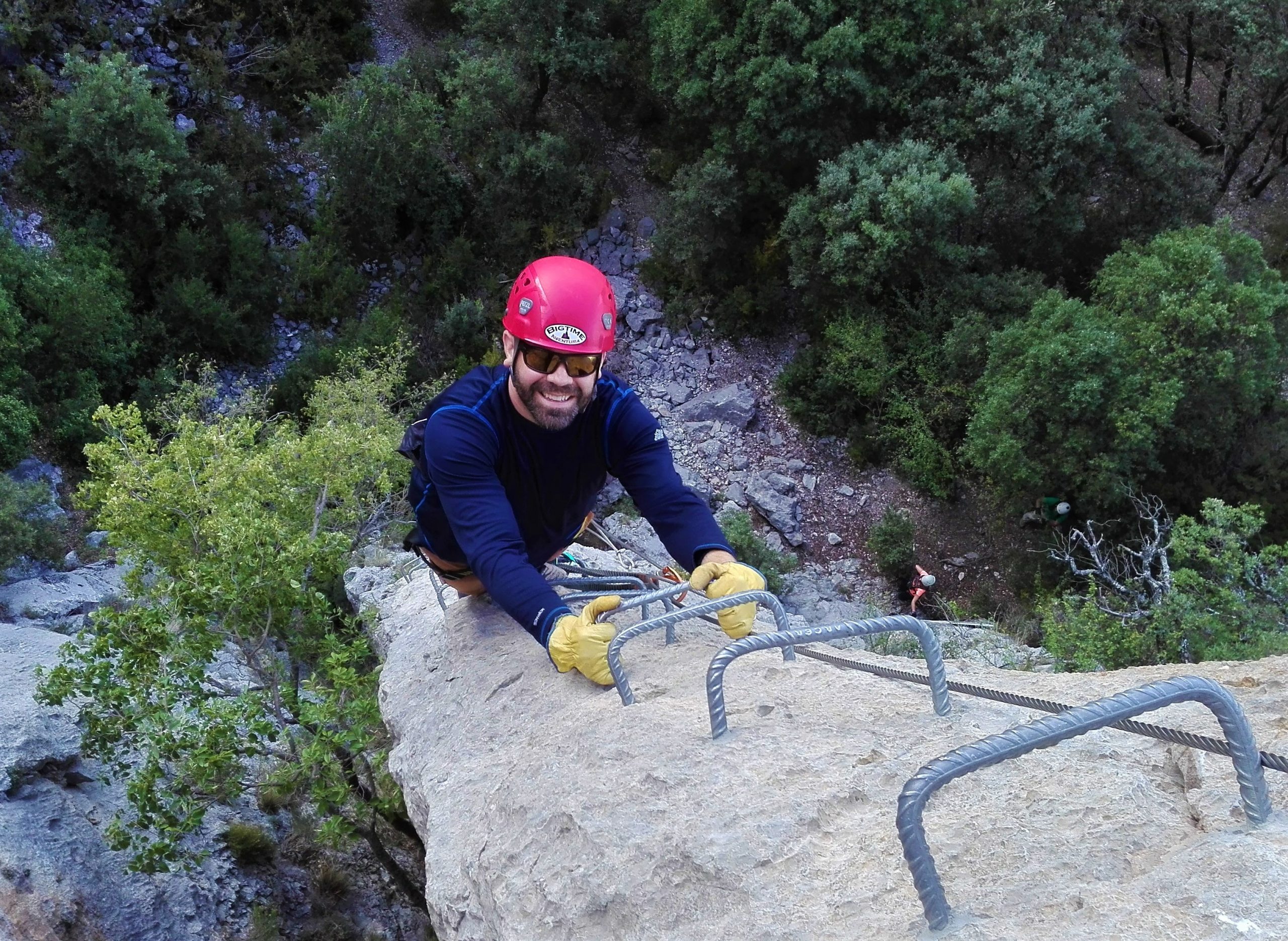
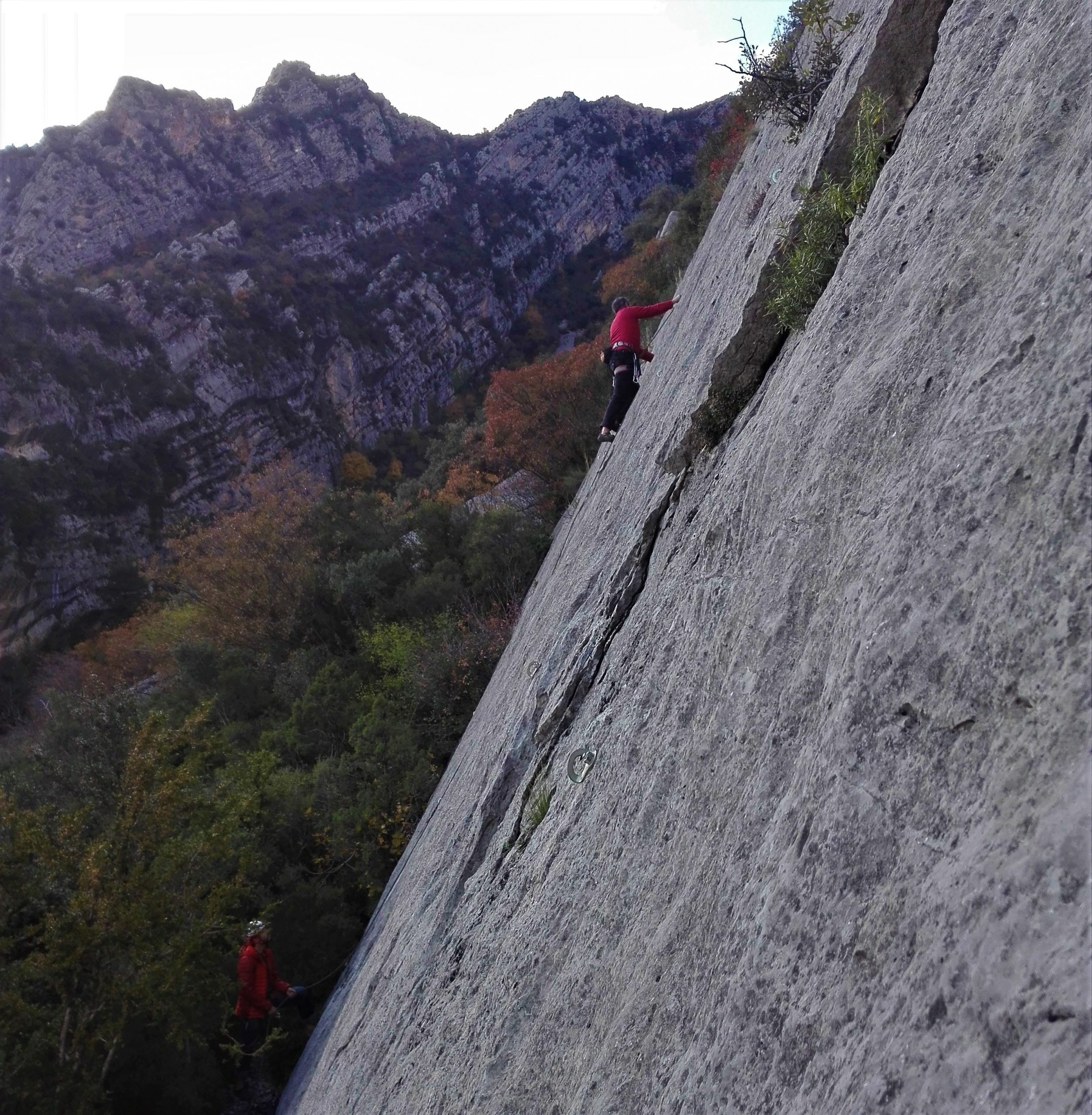
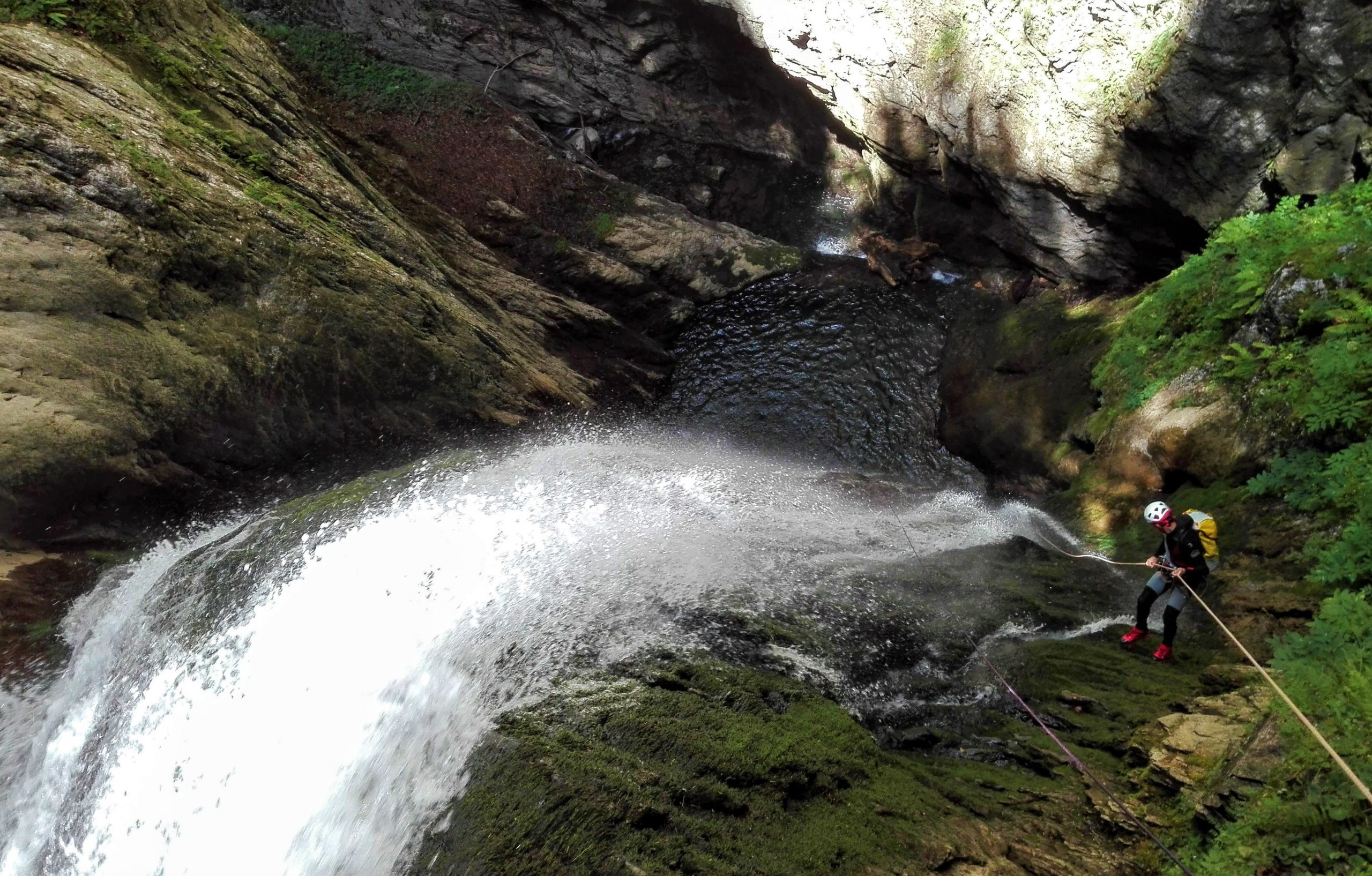

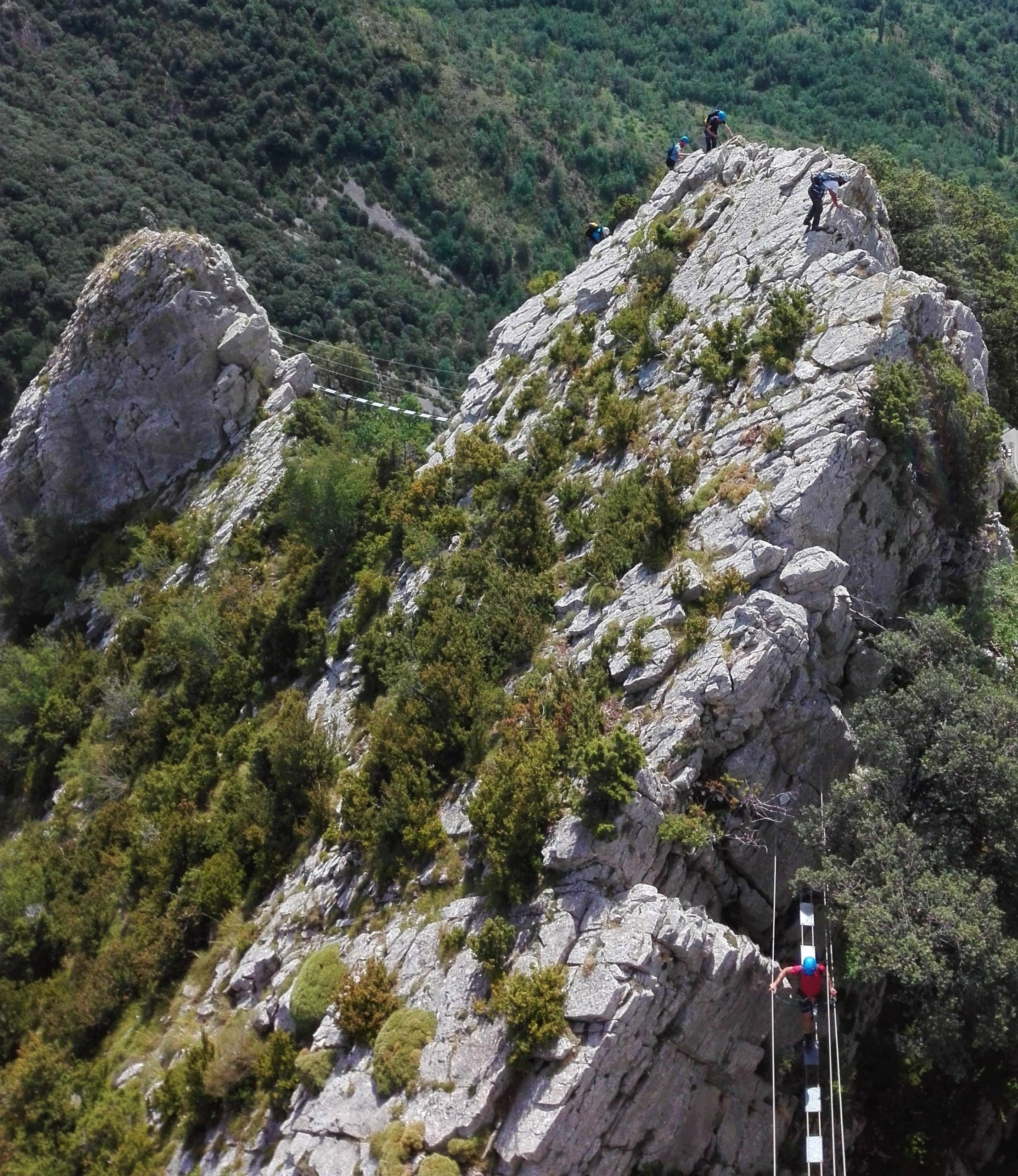
Spain: Pyrenees Multi-Adventure
Spain: Pyrenees Multi-Adventure
This Spain: Pyrenees Multi-Adventure is an incredible trip. Five exciting and challenging days of canyoning, via ferrata, and rock climbing will make this one of the best trips you have ever done. The Pyrenees are an amazing mountain range and there are innumerable outdoor adventures. You could spend a lifetime here and not do them all. However, during this five day trip we will do some of the best canyons and via ferratas in Spain, along with a full day of rock climbing. There won't be much down time on this trip so be ready for action!
Canyoning in the Pyrenees
The Pyrenees are arguably the best region for canyoning in Europe. Erosion has sculpted the soft limestone into incredible playgrounds for canyoneers. As the snowpack melts, alpine lakes hold water well into the summer and provide a constant active water source in the canyons. Outdoor enthusiasts like you can then descend the canyons while managing the water, the techniques, and the risks. Canyoning includes rappelling through waterfalls, jumping into deep pools, sliding into deep pools, scrambling, and hiking through canyons and gorges. It is a very dynamic activity which combines several outdoor disciplines and skills. It is also a great way to cool off during the hot Spanish summers.
Canyoning Rating System in Spain
Wet canyons in Europe are graded using the French Canyoning classification system. This system is also used in several parts of the world where wet canyoning is practiced. Three variables are taken into account for grading the difficulty of descending canyons for recreational activity:
- vertical difficulty: (v1-7), where v1 has short rappels and they are not very vertical, while v7 has steep and long rappels.
- aquatic difficulty: (a1-7), where a1 has very low water flow with few complexities, while a7 has very high water flow with complex water movements.
- commitment: I-VI, where I has very low commitment level and there are ample escape routes, while VI is very committing with few or no escape routes, the only way out is down.
Canyons are an ever-changing natural environment. Therefore, the rating systems used for wet canyoning are an approximate guide to what can usually be expected in a particular canyon. However, many natural elements can change the descent of the canyon, such as changes in temperature that cause increased snow melt, periods of rain, flash flooding, rock fall, tree fall, landslides, etc. Therefore, the grading system provides general information to a canyoneer, which needs to be complemented with experience, knowledge of the area, and understanding of the natural world.
Via Ferrata in the Pyrenees
There are hundreds of via ferratas in Spain and many of the most well-known are in the Pyrenees. Several of the most difficult via ferratas are here too. However, there are via ferratas of all levels in the Pyrenees and during our five-day trip we will do two or three of them. Via ferratas consist of climbing iron rungs that are drilling into the wall. However, many via ferratas have bridges, rappels, and even tyrolean traverses or zip lines. This is a very exciting activity and it allows you to visit and enjoy some remote and interesting places that you would not likely have seen otherwise. Come and enjoy this activity on this five-day Spain Pyrenees Multi-Adventure trip!
Via Ferrata Rating System in Spain
There are several rating systems for grading via ferratas. In Spain, one of the most commonly used is called the Husler Rating System. It was developed by Eugen Husler from Switzerland and is recognized by the The International Climbing and Mountaineering Federation (UIAA). It is a simple grading system that takes into account the difficulty of the technical climbing. It ranges from K1-K6, where K1 is the lowest grade (apt for beginners) and K6 is the highest grade (apt for experts). Recently, in Spain, more precisely in the Pyrenees, there have been a few newly developed via ferratas with proposed grade K7. Contact us to explore these.
Rock Climbing in the Pyrenees
Spain has become a world-renowned country for rock climbing, mostly due to the concentration of high difficulty routes made famous by professional rock climbers. However, there is so much rock in Spain that there is more than enough for every level of climber to enjoy. No matter your climbing level, we will find something for you. On this trip, we will spend one day rock climbing at a sport climbing crag. Therefore, you will be able to top-rope or lead climb on bolted routes. Single pitch climbing on immaculate limestone. Welcome to Spain!
This Spain Pyrenees Multi-Adventure trip is an essential trip for the outdoor adventurer. If you like to be stimulated with varying activities each day, do not miss this opportunity. Contact us to get started.
Summary
Duration: 5 days
Next Dates: June 1 - October 31 (dates may vary depending on conditions and availability)
What is Included?
General
- Certified canyoning guide, certified rock climbing guide: Spanish Mountain Guides Association (AEGM) and Union of International Mountain Leader Associations (UIMLA). Native English, fluent Spanish
- Planning and logistics
- 4 nights accommodation in a mountain lodge (Day 1-4) in the Spanish Pyrenees. The lodge is located in a small town. Rooms at the lodge have 3-7 single beds per room in bunkbed style.
- Food is included at the lodge. This includes: 4 dinners (Day 1-4), 4 breakfasts (Day 2-5), and 4 picnic lunches (Day 2-5). Normally, wine is included with dinner.
- Liability Insurance during the activities
- Accident Insurance during the activities
- Basic First Aid Kit
Canyoning Material
- Wetsuit for each participant
- Canyoning Harness
- Figure 8 Descender with HMS locking carabiner
- Double lanyard with two carabiners
- Helmet
- Rappel rope
- Security rope
- Waterproof container for camera, wallet, etc
- Canyoning backpack
Via Ferrata Material
- Harness
- Via Ferrata Lanyard
- Helmet
- Quick clip carabiner
- Security rope
Rock Climbing Material
- Harness
- Helmet
- Quickdraws
- Climbing rope
- Anchor material
What is NOT Included?
General
- Transportation to and from the start/finish point
- Breakfast and lunch on Day 1 and dinner and lodging on Day 5
- International Travel Insurance (highly recommended). See links below for more information.
Canyoning Material
- One pair of hiking/approach shoes with good rubber soles (i.e. Vibram). They will get wet!
Via Ferrata Material
- Another pair of hiking/approach shoes with good rubber soles (i.e. Vibram). A second pair of shoes that are dry for use on the via ferratas.
Rock Climbing Material
- Rock climbing shoes
Day 1
Canyoning 1. technical difficulty of the canyon: v3a4III, (see section above for an explanation of the canyoning grading system).
We will start the trip with one of the most famous canyons in the Pyrenees. It is technically straightforward with few complications and it's very dynamic and aquatic. Several rappels, some great jumps, and plenty of fun slides too. Truly a great way to start off the week!
Day 2
Via Ferrata 1. The first via ferrata that we will do today is rated K3 (see section above for grading system). It's a great via ferrata to start with because there are easy sections at the beginning to learn how to move on a ferrata. As you progress higher the difficulties gradually increase. We finish at the top of a butte with impressive views up the valley to the high peaks of the Pyrenees and also down valley with gorges and narrowing passes. It's a beautiful place to relax after summiting your first via ferrata of the trip. A short walk off the back brings us back to our cars. We can rest a bit, have lunch, and then head off to the conquer the next via ferrata.
Via Ferrata 2. The second via ferrata today is longer and slightly more difficult. It is rated K4 with arguably a few short sections of K5. There are two distinct sections to this ferrata. The first section is a long ramp system with very few difficulties. However, when the ramp meets a vertical wall things heat up. The upper headwall is vertical, continuous, and with a few slightly overhanging sections. There is quite a bit of exposure because we've gained a lot of altitude after finishing the ramp section. This upper section will be a good challenge for all participants and a great way to finish our day of via ferratas.
Day 3
Rock Climbing. Today we will rock climb. More specifically, we will top rope and/or lead climb single pitch routes at a wonderful climbing area. Easy access and plenty of routes here should keep us busy all day. The route range from grade 4-7 (5.7-5.12), so there should be enough here to more than satisfy everyone. Beautifully featured gray limestone rock is the order of the day in this wonderful Pyrenean setting.
Day 4
Canyoning 2. technical difficulty of the canyon: v4a3III, (see section above for an explanation of the canyoning grading system).
This canyon is different from the first one we did. It is more technical and there are more rappels, most of which go through waterfalls. The canyon also has several narrow sections to navigate and a few slides that enter into small pools.
Day 5
Via Ferrata 3. Today's via ferrata is ranked as a Top 10 in Spain. It's difficulty is K4 and it has a little bit of everything. There are vertical sections, bridges, down climbing sections, pinnacle summits, and equipped canals. The location and the views are spectacular and so is the exposure in several places. This is an amazing via ferrata and a perfect way to finish our trip.
Prerequisites
- A positive attitude and desire to do canyoning, via ferrata, and rock climbing in the Pyrenees! This is an active vacation so be ready to move your body, feel the excitement, and visit some extraordinary places!
- A medium to high level of physical and mental fitness is necessary for this trip.
- Each person must be accustomed to spending extended time (6-8hr/day) in mountainous terrain.
- Each participant must be prepared for changing weather conditions.
Material
The following is a list of personal material that each participant should bring:
- Two pairs of hiking/approach shoes, both with good rubber soles (i.e. Vibram). One pair you can use for canyoning and the other for via ferrata. The pair for canyoning will get wet but it is essential that they have good rubber soles because safety in the canyons begins with good footwear.
- Appropriate clothing for outdoor adventures in the mountains. Dress in layers, like an onion. The 3-layer system is important and should definitely be utilized during the via ferrata and rock climbing days on our multi-day trip. Base layer: synthetic thermal clothing to wick away perspiration and keep you dry. Middle layer: fleece jacket to maintain body heat. Outer layer: waterproof/windproof shell to protect against the elements.
Canyoning
- One pair of hiking/approach shoes with good rubber soles (i.e. Vibram). These will get wet in the canyon and will most likely remain wet for the week.
- Personal bathing suit to wear under the wetsuit.
Via Ferrata
- Another pair of hiking/approach shoes with good rubber soles (i.e. Vibram). Dry shoes to be used for via ferrata and the approach for rock climbing.
- Personal climbing harness (a harness can be provided if necessary)
Rock Climbing
- Personal climbing shoes
- Personal climbing harness (a harness can be provided if necessary)
General
- Personal medication
- Day pack (20-30L capacity backpack) to carry your personal gear, lunch, and drink.
- Water bottle(s)/Camelback, etc. Minimum 1L.
- Sunscreen (SPF 30+)
- Sunglasses
- Sun hat
- Headlamp
